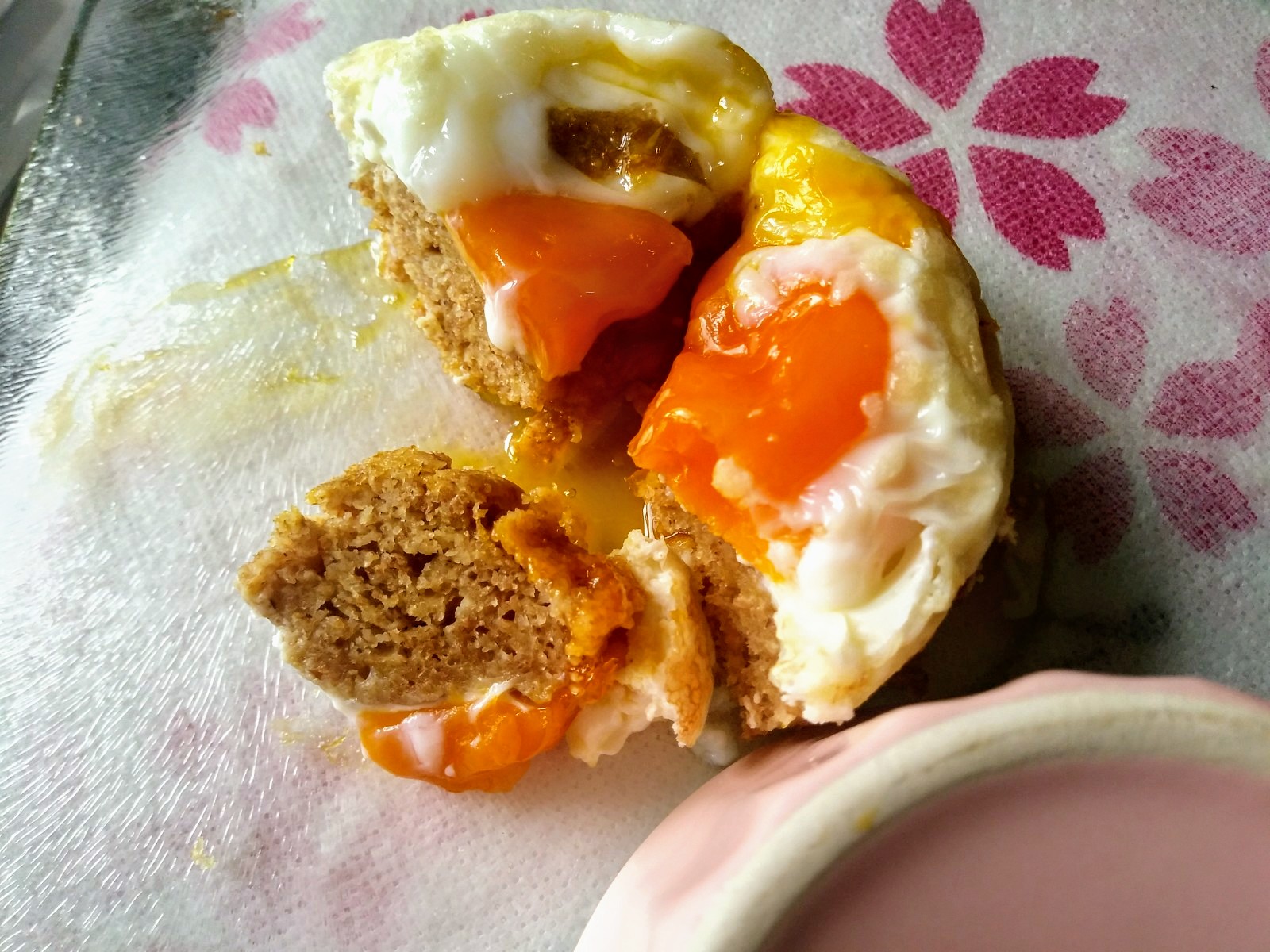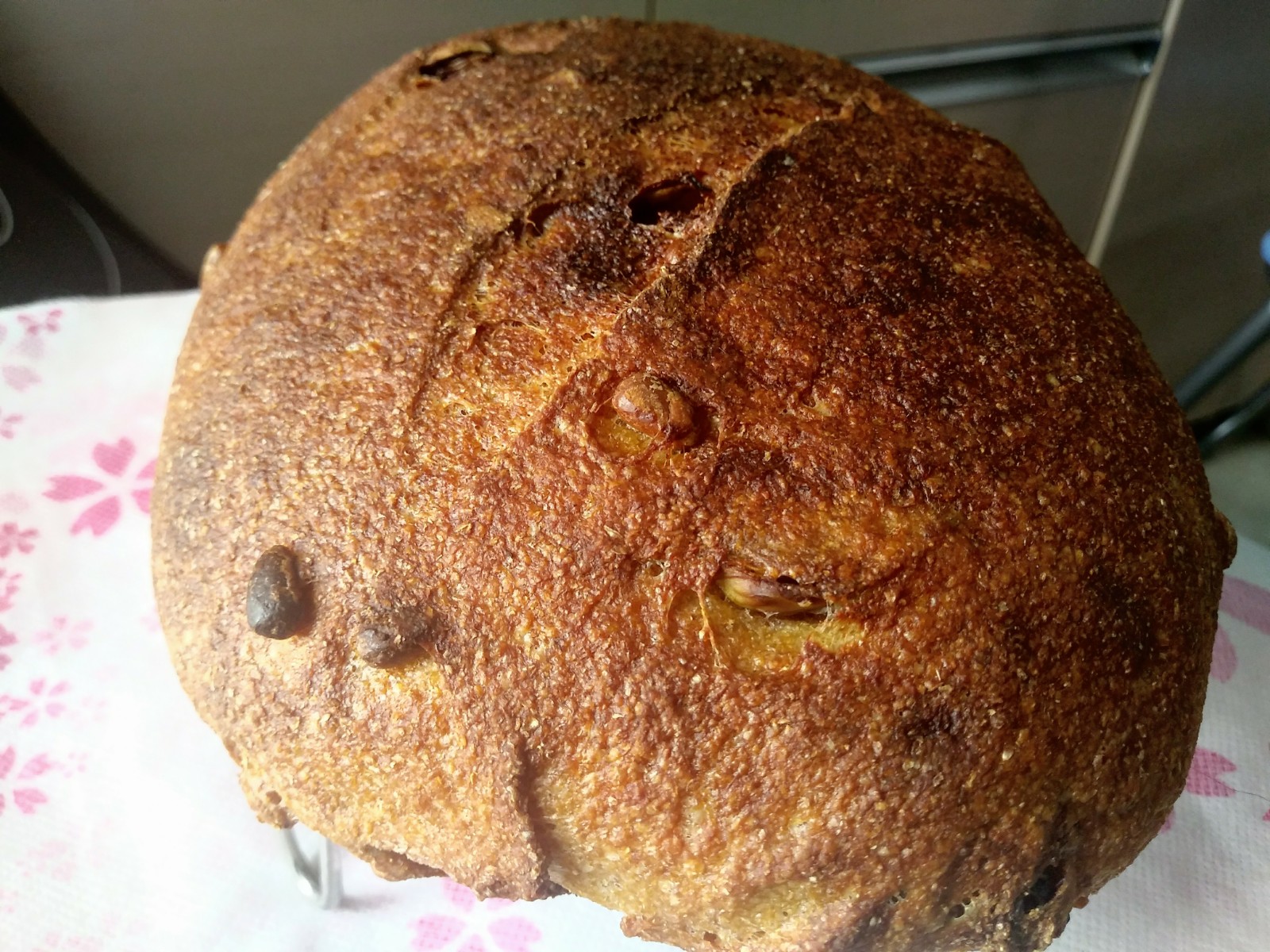
The Rye baker: Salty rye rolls. 55% Rye @ 63% Hydration
rye @ 63% hydration salty rye rolls.

rye @ 63% hydration salty rye rolls.

but here goes. You don't know if you don't ask. I bake for my husband only so don't make massive amounts in one go. I also have limited space in my kitchen so am looking for a mixer that will handle bread dough well but is compact and all on a budget. Am quite happy to look for pre-used and am based in the UK. There are so many out there and I specifically want one that can handle bread dough well so I thought this was a good place to start. I currently hand knead but am ready to have another option.


For the complete step by step formula visit the pie king, by clicking on the link below.

We had not made pizza in some time and it had been way longer since we had made YW/SD combo levain for the dough and even longer since we made it on the gas grill but it is summer and there is no way we are heating up the kitchen to ramming speed for a couple of hours.
The recipe is easy enough. 9% pre-fermented KA bread fkour levain using 2.2% NMNF starter and YW for the liquid – in our case half FIG and half apple YW. The dough flour is half LAFama AP and half KA bread flour at 70% overall hydration and 2% PH sea salt. We added re-hydrated dried rosemary and sun dried tomatoes both chopped medium. We did not put in any shopped garlic like we normally do for some reason.
Once the levain had tripled we added it to the 20 minute autolyse that had the salt sprinkled on top and then mixed it with a spoon before doing 40 slap and folds. We then did 2 mores sets of 20 slap and folds and 2 sets of double Sleeping Ferret folds all on 30 minute intervals adding in the rosemary and sun dried tomatoes during the first set of 20 slaps.
We then let it rest for an hour in an oiled SS bowl for an hour before going into the fridge for a 13 hour retard. Take it out 4 hours before you want to make pies and leave it in the counter for an hour before dividing into, in our case (3) 250 g pies. Shaping into a boule and putting them back into the bowl oiled up a bit so they don’t stick together as they rise over the next 3 hours.
These make large 14”pies which is the largest that will fit on our round stone. With the 3 hour proof the dough was strong yet very extensible and they formed nice very thin crusts that didn’t tear even with the add ins. I transfer them to a wood peel that had flour rubbed into it and corn meal for the ball bearings so it will slide off easily before we put the toppings on.
These 3 pizzas were the same in most ways. DaBrownman’s spicy sauce goes down and spread thinly first, followed by 75 g each of fresh whole mozzarella and part skim mozzarella. Then the chopped smoked onions and crimini onions go down.
The first pie had smoked hot Italian sausage on it, the 2nd one had Guisto’s, a large, thin pepperoni from Whole Foods and a great pepperoni, the 3rd was our version of margarita even though it had smoked veggies on it. Then we showered each pie with real grated Parmesan.
The margarita had basil leaves dropped on the pie after it came out and all the pies got some additional Parmesan as well. The grill is the best way to make pizza around here because we can get it up to 650 F with the 4 burners on and the pies take 5 minute to bake on the hot stone instead of the 8 they take in the 550 F oven.
That is a big slice with no bend and no fold - crisp like a potato chip!
These pies came out super crisp and the crust crunched like potato chips – just the way it should be. The pepperoni was the best in my book because the meat was thin enough to crisp up and it was delicious. The margarita was second favorite with he hot Italian smoked sausage bringing up the rear - but it was still great.
Sadly my daughter was in surgery until after midnight and missed it. M y wife and I could only eat 10 of the 24 slices and the remainder hit the freezer for left overs. After slicing, we have learned to keep then on raised cooling racks so that they stay crisp as opposed to leaving them on a plate where they get soft.
And Lucy has this thing about salad with ever dinner too! This one is peach, blueberry, shaved Parmesan, carrot, red pepper, crimini mushroom, green onion, cucumber and tomato slices

Esteemed Bakers!
My starter has been behaving a bit inconsistently lately. Nothing disastrous, but I'm just seeking a couple pointers on "best practices."
First, after feeding a refrigerated starter, do you put it back immediately or let it rise to peak, or let it rise but not to peak (ie when it's still young), before putting it back to sleep?
Second, whenever I want to refresh a refrigerated starter for baking, should I only feed it once and wait for it to reach the desired levain stage, or should I feed it over the course of a day or two (like 2 or 3 feedings)?
Lastly, what do you actually consider as a young levain? Before it reaches peak, or the beginning of the peak stage?
Thank you!


Hi everyone, I was preparing a Pain de Campagne from FWSY which is at 78% hydration. The recipe calls for a long 5 hour fermentation with stretch and folds in the first two hours. The stretch and folds were going well and I could even pick up the dough and flip it in the bowl. After the 5 hours were done though, when I flipped the dough slowly onto a floured surface, it was impossible to shape. It stuck to the surface regardless of flour and gluten webs stretched between the surface and the dough every time I tried to fold it to start the shaping. It was certainly much worse to handle than it was at the last fold. It was like pancake batter. Even slap and folds were completely useless. I know this isn't because of the hydration because I've kneaded an 80% ciabatta dough before successfully with slap and folds. I would have been able to knead this dough as it was by the last fold before the next 3 hours of rising. I really don't understand what happened. I was following the book to the letter. The only variable that could have affected the rise was that I baked another loaf in the same kitchen during the rise in those 3 hours after folding, but I don't know the science of how that could have affected it. Please help! It hurts to have to throw this away and I want to try to avoid doing that again.


Although I’ve been to South Korea before, I haven’t learnt of Gyeran-ppang, a popular kind of Korean Street food, until I came across its picture a week ago. Being a soft sponge cake with a molten egg in the centre, what’s not to love?

Fancified YW Gyeran-ppang계란빵 (Korean Egg Bread)
Inspired by Maangchi from https://www.maangchi.com/recipe/gyeran-ppang
Total flour:
60g 100% Freshly milled red whole wheat flour
For leaven:
20g 33.3% Yeast water
20g 33.3% Flour from total flour
For batter:
40g 66.7% Flour from total flour
~60g 100% 1 large whole egg
40g 66.7% Whey
40g 66.7% Leaven
6g 10% Diastatic barley malt
0.6g 1% Salt
Toppings:
-g -% 3 large whole eggs, cold from fridge
5g 8.3% Freshly shredded Parmesan
Combine all leaven ingredients and let sit until doubled, around 5 hours.
Mix together the batter ingredients and ferment for 3 hours. Divide the batter among 3 oiled ramekins. Retard for 10 hours.
Preheat the oven at 200°C/392°F. Remove the ramekins from the fridge. Crack an egg into each ramekin then sprinkle the Parmesan on the edge. Bake for 15 minutes for molten yolks. Let cool for 5 minutes before serving.


I made my first yeast water starter with dried dates a week ago, which was then fed with raisins. To try it out, these cakes were leavened purely with yeast water.

Whey was used instead of water or milk to keep the bread light and moist, in the absence of butter and oil. The bread is spongy and springy with a slight chew so don’t expect a chiffon cake texture out of it.

Unlike the authentic version, the sponge cake at the bottom isn’t merely an edible container for the egg, which often gets all the attention. It is a real star on its own. Since there’s no butter to district you, the richness of the egg, and the sweetness and maltiness of red wheat and barley malt truly come through. The Parmesan added the savory factor that brought the bread to another level.
______
Durum is another grain I’ve long wanted to work with other than kamut. Since the two grains share similar yellow colour, I was curious in knowing whether their taste resembles each others as well. As durum is most commonly used in pasta making, the components of this bread are some of my favorite pasta ingredients.

50% Durum Italian Pasta SD with 25% Sprouted Durum
Dough flour (all freshly milled):
150g 50% Whole white wheat flour
75g 25% Sprouted durum flour
75g 25% Whole durum flour
For leaven:
10g 3.3% Starter
45g 15% Bran sifted out from dough flour
45g 15% Whey
For dough:
255g 85% Dough flour excluding bran for leaven
177g 59% Water
60g 20% Whey
100g 33.3% Leaven
6g 2% Freshly grated Parmesen
9g 3% Vital wheat gluten
3g 1.5% Salt
Add-ins:
45g 15% Caramelized brussel sprouts, cut into one eighths
15g 5% Toasted pine nuts
___________
305g 100% Whole grain
287g 94.1% Total hydration
Sift out the coarse bran from the dough flour, reserve 45g for leaven. Soak the rest, if any, in equal amount of water taken from dough ingredients.
Combine all leaven ingredients and let sit until doubled, around 4 hours.
Roughly combine all dough ingredients except for the salt, leaven, and soaked bran, autolyse for 15 minutes. Knead in the reserved ingredients and ferment for 15 minutes. Fold in the add-ins then ferment for 2 hours longer.

Preshape the dough then let it rest for 15 minutes. Shape the dough and put in into a banneton. Retard for 12 hours.
Preheat the oven at 250°C/482°F.
Score and spritz the dough then bake directly from the fridge at 250°C/482°F with steam for 15 minutes then without steam for 25 minutes more or until the internal temperature reaches a minimum of 208°F. Let cool for at least 2 hours before slicing.

The dough was noticeably stiff but I held onto adding more water. This was because lower hydration is usually chosen for dough composed primarily of durum according to my observation. However, it happened to be a mistake, as evidenced by the closed crumb.

Not too surprisingly, durum has a flavour profile that reminds me of kamut. This bread is again, sweet and sourness is barely detectable. I was hesitant about putting brussel sprouts into bread but my worries were unnecessary: their sweetness and slight bitterness go really well with durum. Everything you can find on top of pizza would be nice in sourdough :)
________

A gift loaf: pistachio dark chocolate 100% whole spelt SD

Blending raisins into red enchiladas sauce after taking Dabrownman’s suggestion

Using half of the sauce for this plate of crisped-homemade-corn-tortillas-topped udon

Cold soba noodles with garlicly sautéed summer veggies

Hi there,
a month or two ago I beseechingly approached you guys after failing at Forkish's Walnut Levain recipe. It was my very first post on this forum and you were more than generous with your advice and encouragement. Today I'm writing you to present you with the fruits of your labor (and mine, of course).
[FYI, Here's the original post with all your great advice in the comments: http://www.thefreshloaf.com/node/56574/fwsy-walnut-levain-bread-fail-help-needed]
You will see in my notes below that I completely disregarded Forkish's schedule this time around, as I understand many of you do.
I am very pleased with the outcome. Thanks to using different (better) flours and being introduced to the brilliant Rubaud method (hat tip to Lazy Loafer and others) I was even able to stick with Forkish's hydration (78%).
What do you think: Is there anything I could do better still next time around? Where do you see room for improvement?
Alright, here's my notes and a few pictures:
INGREDIENTS:
SCHEDULE:
Again, a big thank you to all of you who've chipped in!!!
Sending oven warm regards from Germany,
-Nils

Between a fair amount of time away from home and baking the same old reliable stuff, I haven't been much of a blogging presence around these parts lately.
On our last morning in Trieste last month, I stopped into the small Despar supermarket to check out their flour section and came across a flour called Tritordeum, which I had never heard of before. Those in mainland Europe may be familiar with it as well as a few old-timers on TFL who may recall reading our Abel Sierra's few postings about this flour in 2014, including a posting for baguettes.
Tritordeum is a new hybrid grain, a cross between barley and durum, originally bred and cultivated in Spain (hence Abel's familiarity with it) and available mostly only in Spain and Italy and perhaps a few other European countries. I picked up a 500g bag and slipped into my suitcase for the long ride home.
A single bag wasn't going to get me very far and, indeed, I used all 500g on this dough. No room for do-overs, this was a one-shot deal for me.
Somewhat following Abel's outline, I changed around a few things. Here is his writeup on his related YouTube entry. Even for the non-Spanish speakers, the majority of this should be understandable:
I didn't have enough tritordeum @20% prefermented flour to also make the levain. Here are differences:
Due to the long cold retard, I eliminated the IDY.
The dough was magnificently easy and handleable throughout the French Folds, and incredibly extensible during my bench-top Letter Folds. A dream. Off to cold retard it went. And that's when Happy Days ended and trouble in River City began.
Upon divide, and pre-shape I realized I was dealing with a wholly different animal (vegetable?). This dough was quite moist, still unbelievably extensible. But getting a baguette shape out of it was a step away from trying to wrangle cats. As the dough is a hybrid of barley and durum, I opted to coat two of the three in sesame seeds - my go to version for a semolina bread. And even that was a challenge.
I was pretty dejected as I placed them onto a well floured couche for the remainder of their overnight retard.
I can state with certainty that this was right up there with one of the two most difficult doughs that I have tried to shape so far. And no second chances. I unfurled the couche early this morning to find that they had flattened out. Grr. Scoring them was less of a challenge than I anticipated, and off they went into a steamed 460dF oven.
Surprisingly, the dough was quite forgiving as it baked, and although I am unimpressed with the final grigne (for me) and the baguettes are still flat, the results are way better than I could have anticipated. And most surprisingly is how open the crumb is. So far the taste is most similar to a semolina bread. And yes, the crumb is that yellow.
You can read about Tritordeum here.
The 500g bag with my bubbling AP levain in the background.
Post French Folds, when the blob was still well behaved.
3 baguettes/long batards x 350g
And just for fun:
Flours in a Porec, Croatia supermarket
Flours in a small market in Krajska Gora, Slovenia in the midst of the magnificent Julian Alps.
alan

I made my first sour dough starter in March with whole wheat flour and it has been working wonderfully. Made lots of sour dough loaves. I keep the starter in the fridge with a paper towel on the top, held by a rubberband so it can get some oxygen. Im very clean about handling it to avoid contamination.
I started adding brown sugar to the starter and ive noticed a red tint forming at the inside top part of the jar.
It smells normal and the alcohol is still forming normally on top of the starter. Is the red tint most likely a harmful bacteria or mold or is it most likely just a residue from the brown sugar?? I made one bread from it and ate it and nothing bad happened. But i dont want to roll the dice again if this is not normal. I saw some other posts on this but no one mentioned that the red tint formed after adding brown sugar. Thank you!